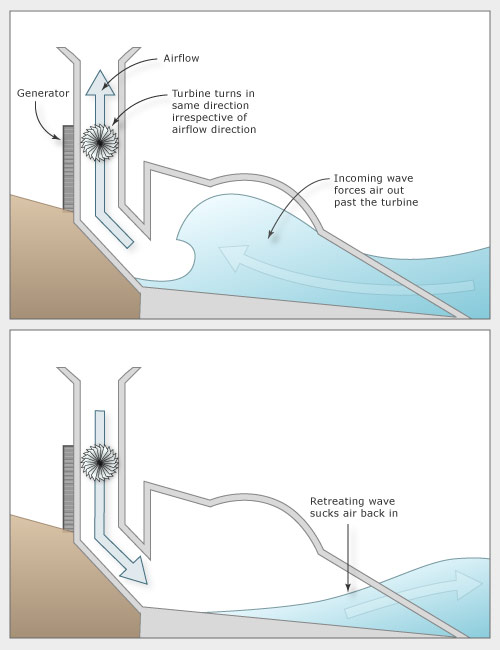China will press forward with the reform and openingup drive and socialist system, which transformed its economy into the world's fourthlargest, President Hu Jintao said Thursday. After thirty years of economic reform, China has reached a crossroads in its development process, and faces many challenges in the use of natural resources, the living environment, and the economic, social and political systems. Prior to the initiation of economic reforms and trade liberalization nearly 40 years ago, China maintained policies that kept the economy very poor, stagnant, centrally controlled, vastly inefficient, and relatively isolated from the global economy. China's grand transformation from different perspectives, including economic, social and political. discusses how these transformations are linked to the country's opendoor policy, and draws implications for China's social policy reform. Watch as China marks 30 years of reform Thirty years ago, there was little international trade. There were few tourists and few cars, but there were millions of bicycles on the streets. African Studies; American Studies; Ancient Near East and Egypt; Art History; Asian Studies; Book History and Cartography; Biblical Studies It is now thirty years since the Peoples Republic of China announced its market reform policy at the Third Plenum of the 11th Central Committee of the Chinese Communist Party (CCP) in December 1978, under the then new leadership of Deng Xiaoping. The policy followed the death of Mao Zedong in. 2 After thirtyfive years of successful reforms first launched by Deng Xiaoping and his colleagues at the famous Third Plenum of the Eleventh Central Committee in December 1978, many China Tisdell, Clem, Thirty Years of Economic Reform and Openness in China: Retrospect and Prospect, The University of Queensland This article incorporates public domain material from the Library of Congress document: China: A country study. With this month marking the 30th anniversary of the launch of Chinas economic reform policies, the Economist reflects on the prospects for political reforms as the PRC enters its 60th year. Reform of the Chinese Communist Party and its political activities, reform of government organization, reform of the economy, military reforms, cultural and artistic reforms, indeed, China's postMao Zedong leaders called for reform of every part of Chinese society. However, after 30 years of reform, the job structure still resembles that of Japan in 1950, with nearly 50 percent of the active population engaged in the primary sector, 20 percent in the secondary sector, and 30 percent in the tertiary sector. changed and further changes in emphasis can be expected in the future as conditions Thirty Years of Economic Reform and Openness in China: Retrospect and Prospect 1. Introduction Few, if anyone, could have imagined in 1978 how much economic and social progress China would make in the next 30 years as a result of deciding to embark on its. Thirty years after it was introduced, the 'transitional policy' endures despite warnings of its punitive effects on China's development Tania Branigan in Beijing Fri 16 Aug 2013 11. Thirty Years of Reform and Social Changes in China is translated from the original Chinese to provide a look into how scholars in China have been assessing their country's recent societal and political history. Since the mid1990s, a new landuse rights regime has gradually come into effect in China. It follows upon a series of earlier changes land reform, collectivization and the first wave of. Chinas policy of reform and opening, formalized in 1978, has had wideranging rami fications on the structure of Chinese society and the nature of its social programs. Since the mid1990s, a new landuse rights regime has gradually come into effect in China. It follows upon a series of earlier changes land reform, collectivization and the first wave of contracting land to households that paid attention to womens role in publicly recognized work and provided access to. Thirty years ago this week, Deng Xiaoping and the Chinese Communist Party turned their backs on Maoism and embarked on a reform program that led to the most remarkable period of wealth creation. This book has made the analysis to the course of social changes in China since reform and opening for 30 years, has discussed the changes in the social structure, in the social policy, in the social system and in the urban and rural regions etc. from the overall sociological angle of view, has made the detailed analysis to the influence of this great process to the Chinese social. SMEs as motor of growth: A review of China's SMEs development in thirty years ( One of the most remarkable changes during the entire reform process is the rapid growth of small and mediumsized enterprises (SMEs). About the book: The past 30 years since the introduction of the reform and openingup policy in 1978 have witnessed an outburst of vitality in China, and the gradual extension of the living space. China has experienced great changes during the past 30 years while maintaining its good traditions. Koichi Kato, chairman of the JapanChina Friendship Association Enormous changes have taken place in China since the inauguration of its reform and opening up policy 30 years ago. This unleashed thirty years of unprecedented social and economic changes in China. Today, Party leader Xi Jinping faces a different China. AmazonThirty Years of Reform and Social Changes in China (Social Scientific Studies in Reform Era China)AmazonLi Qiang The 30 years of reform and opening have brought great material progress to China. By becoming a big country, Chinas actions created huge spillovers on other countries. It traces the main features of preCommunist Chinese legal tradition that sharply distinguish it from the West, the drastic impact on law of thirty years of Maoist rule, and the major economic and social changes produced by reforms that influence the operation of the new legal institutions. China would make in the next 30 years as a result of deciding to embark on its economic reforms and to introduce opendoor policies. The purpose of Chinas reform was said to be The social and economic change that has occurred in China is unlikely to be reversed in the foreseeable future. China has now achieved the status of being a top global leader and resourceuser and this will bring with it new challenges. Thirty Years of Economic Reform and Openness in China: Retrospect and Prospect. 2008 is China's 30th anniversary of the reform and opening up. Looking back upon the past 30 years clearly reveals that great achievements have been made in many areas. Every society changes, but China's changes faster. The startling transformation that began 30 years ago this month with the. Thirty years of reform and opening up have brought about historic changes in Chinas developmentthe market economic system has basically shaped up, creating rocketing economy that is now the fourth largest in the world. Chinas Vision for the Next 30 Years. one that reflects the changes that economic reform and opening have brought to China. For unlimited access to Project Syndicate, subscribe now. Chinas Reform and Opening era, over the past thirty five years, has ignited seismic changes in Chinas relationships with the global community, and unleashed the. Brills MyBook program is exclusively available on BrillOnline Books and Journals. Students and scholars affiliated with an institution that has purchased a Brill EBook on the BrillOnline platform automatically have access to the MyBook option for the title(s) acquired by the Library. Only in the early years of the twentieth century, almost thirty years into Chinas reforms, did the political economy of the SARS crisis and other links to social instability drive policymakers to reassess the problems in Chinas healthcare system as a whole. China has had a remarkable period of rapid growth shifting from a centrally planned to a market based economy. Today, China is an upper middleincome country that has complex development needs, where the Bank continues to play an important development role. After thirtyfive years of successful reforms first launched by Deng Xiaoping and his colleagues at the famous Third Plenum of the Eleventh Central Committee in December 1978, many China watchers. Thirty Years of Reform and Social Changes in China is translated from the original Chinese to provide a look into how scholars in China have been assessing their country's recent societal and political history. It is exactly 30 years since the conclusion of the Third Plenum of the Central Committee of the Communist Party of China, the meeting that consolidated Deng Xiaoping's position as China's leader and laid the groundwork for a generation of economic reform. In 1978, Deng was the great survivor. Thirty years ago, China embarked on a reform programme that has transformed the country, and continues to do so today. The Yuebin was Beijing's first privatelyrun restaurant to open after the late Chinese leader Deng Xiaoping began his revolutionary reforms. The past three decades have witnessed rapid economic development and dramatic social changes in China, and because all the changes were initiated by the economic reform and opendoor policy in 1978, economists have been playing a leading role in accounting for not only the economic transition but. On June 25, 2008 China set a guideline for a new round of institutional reform of the State Council, the country s Cabinet, in an effort to build up a serviceoriented, responsible, lawabiding and. The transformation of the country from a closed planning economy to a dynamic capitalist society in the past 30 years can be broadly attributed to the changes in three broad interrelated areas: institutional reforms (especially at the level of governments), organizational innovations (especially the emergence of various private and hybrid. A key Party session ended Wednesday with a pledge to deepen political reform. The political system needs to keep pace with the requirements of the country's economic and social development, the. China's thirty years war on drugs 30 years of rural reform in China Changes in employment in China Report: Conflicting interests threaten social harmony. Thirty Years of Reform of Chinas Higher Education Funding Mechanism Xiahao Ding, Fengliang Li and Yuze Sun 6. The Labour Market for Graduates in China. Transformation in social stratification structure in China after thirty years of reform Li Qiang Rural reform and social change in the countryside Wang Xiaoyi Urbanization and movement of rural labor Bai Nansheng Reform and changes in urban governance Wang Ying Reform and changes of work units Li Hanlin Consumption and.











